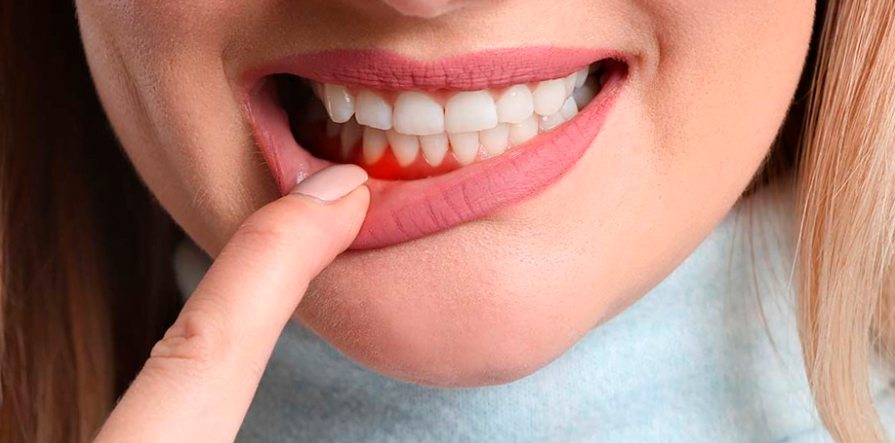Mouthwash based on matcha (green tea powder) reduces the symptoms of periodontitis and inhibits the development of pathogenic bacteria
Periodontitis, a severe inflammatory gum disease, poses significant health risks if left untreated. Beyond causing tooth loss, periodontitis has been linked to systemic conditions such as diabetes mellitus, preterm birth, cardiovascular disease, rheumatoid arthritis, and certain cancers. A principal bacterial instigator of this condition is Porphyromonas gingivalis, a pathogen that thrives in the biofilms on tooth surfaces and deep periodontal pockets.
Matcha: A Powerful Ally Against Periodontitis
Understanding the Role of Porphyromonas gingivalis in Periodontitis
Porphyromonas gingivalis is a gram-negative bacterium implicated in the onset and progression of periodontitis. It disrupts the host immune response, leading to inflammation and tissue destruction. Addressing this bacterial threat is crucial for managing and preventing periodontitis.
Matcha and Its Antimicrobial Properties
Matcha, a finely ground powder of specially grown and processed green tea leaves from the plant Camellia sinensis, has been traditionally used in Japanese tea ceremonies. Recent research highlights its potential in combating oral pathogens, including P. gingivalis.
Laboratory Findings
Researchers from Japan, in a study published in Microbiology Spectrum, demonstrated that matcha can inhibit the growth of P. gingivalis. In vitro experiments revealed that within two hours of exposure to matcha extract, nearly all cultured P. gingivalis cells were killed. After four hours, complete bactericidal activity was observed.
Clinical Evidence
A clinical study involving 45 participants with chronic periodontitis provided further support. Participants were divided into three groups, each receiving different mouthwash treatments: barley tea, matcha extract, and sodium azulene sulfonate hydrate (an anti-inflammatory agent). The group using the matcha mouthwash exhibited a significant reduction in P. gingivalis levels in saliva, measured through PCR analysis. This reduction was not observed in the other two groups.

A clinical study to examine the effect of matcha mouthwash on periodontal diseases. (A) Flow diagram of study protocol. Forty-five subjects who fulfilled the inclusion criteria were enrolled between March 2021 and February 2022. They were randomly divided into three groups, and given a powder containing one of the following three different agents: sodium azulene sulfonate hydrate (Grp. A), barley tea (Grp. B), or matcha (Grp. C). All 45 patients enrolled in the present study were followed up and analyzed, i.e., there were no dropouts. (B) Visit protocol. Informed consent was obtained from all the patients who completed initial periodontal therapy. The intervention was performed during the period of supportive periodontal therapy for each patient. The patients prepared the mouthwash with tap water by themselves, and used it twice a day for 1 month, according to the dentist’s instructions. Oral examination was performed and saliva samples were collected before and after the intervention.
Mechanisms of Action: How Matcha Inhibits P. gingivalis
Polyphenols and Catechins
The antimicrobial effects of matcha are largely attributed to its high concentration of polyphenols, particularly catechins. Epigallocatechin gallate (EGCG), a prominent catechin in matcha, has been shown to disrupt bacterial cell membranes, inhibit biofilm formation, and modulate inflammatory responses.

Aggregation and adherence of P. gingivalis treated with ME. (A) In vitro autoaggregation assay. In flow cytometry analysis (left), P. gingivalis cells were treated with vehicle control (1% DMSO) or ME at different concentrations (1, 10, and 100 µg/mL). The x- and y-axes showed the FSC and the SSC, respectively. Shown (right) are the difference in turbidity of the tubes 2 h after treatment with vehicle control (1% DMSO) and ME (100 µg/mL) in in vitro tube assay. (B) Real-time HS-AFM imaging of aggregation of P. gingivalis cells after ME treatment (1.0 mg/mL). Bar: 300 nm. See also Video S2. (C) FimA-dependent autoaggregation. In vitro aggregation assays were performed using P. gingivalis WT, FimA mutant (fimA−), Mfa1 mutant (mfa1−), and FimA and Mfa1 double mutant (fimA− mfa1−) strains in the presence or absence of ME. The top panels showed the change in turbidity (OD600) for 150 min. The morphology of each P. gingivalis cell (FE-SEM) treated without or with ME at a concentration of 1 mg/mL is also shown in the middle or bottom panel, respectively. Bars: 200 nm. (D) Fimbriae-independent adherence. ME dramatically decreased the adherence of cells not only of wild type but also of a series of fimbrial mutant strains.
Synergistic Effects with Oral Health
Matcha’s impact extends beyond antibacterial activity. Its antioxidant properties help mitigate oxidative stress, which is a contributing factor to periodontal tissue damage. Additionally, matcha promotes oral hygiene by reducing plaque accumulation and enhancing the overall oral microbiome balance.
Broader Implications for Health
Cardiovascular Benefits
Observational studies suggest that regular consumption of green tea, including matcha, is associated with improved cardiovascular health. This is attributed to its ability to lower LDL cholesterol levels, reduce blood pressure, and improve endothelial function.
Anti-Diabetic Effects
Green tea polyphenols have been shown to enhance insulin sensitivity and regulate blood glucose levels, which is particularly beneficial for individuals with diabetes who are at a higher risk of developing periodontitis.
Anti-Cancer Potential
The chemopreventive properties of green tea catechins have been documented in various studies. These compounds inhibit cancer cell proliferation, induce apoptosis, and prevent metastasis, making matcha a potential adjunct in cancer prevention strategies.
Conclusion: Integrating Matcha into Oral Health Regimens
The evidence supporting matcha as a potent antimicrobial agent against Porphyromonas gingivalis and its broader health benefits is compelling. Incorporating matcha into daily oral hygiene practices, such as using matcha-infused mouthwash, can be a valuable addition to traditional periodontal therapies. Further research and clinical trials will continue to elucidate the full spectrum of matcha’s therapeutic potential.
Suggested Diagram: Mechanisms of Matcha Against P. gingivalis
Integrating matcha into oral health routines not only offers direct antimicrobial effects against P. gingivalis but also supports overall systemic health, making it a promising natural adjunct in the management of periodontitis.
Sources
- American society for microbiology – Multimodal inhibitory effect of matcha on Porphyromonas gingivalis – 21 May 2024;
- ScienceDaily – Matcha mouthwash inhibits bacteria that causes periodontitis – 21 May 2024









